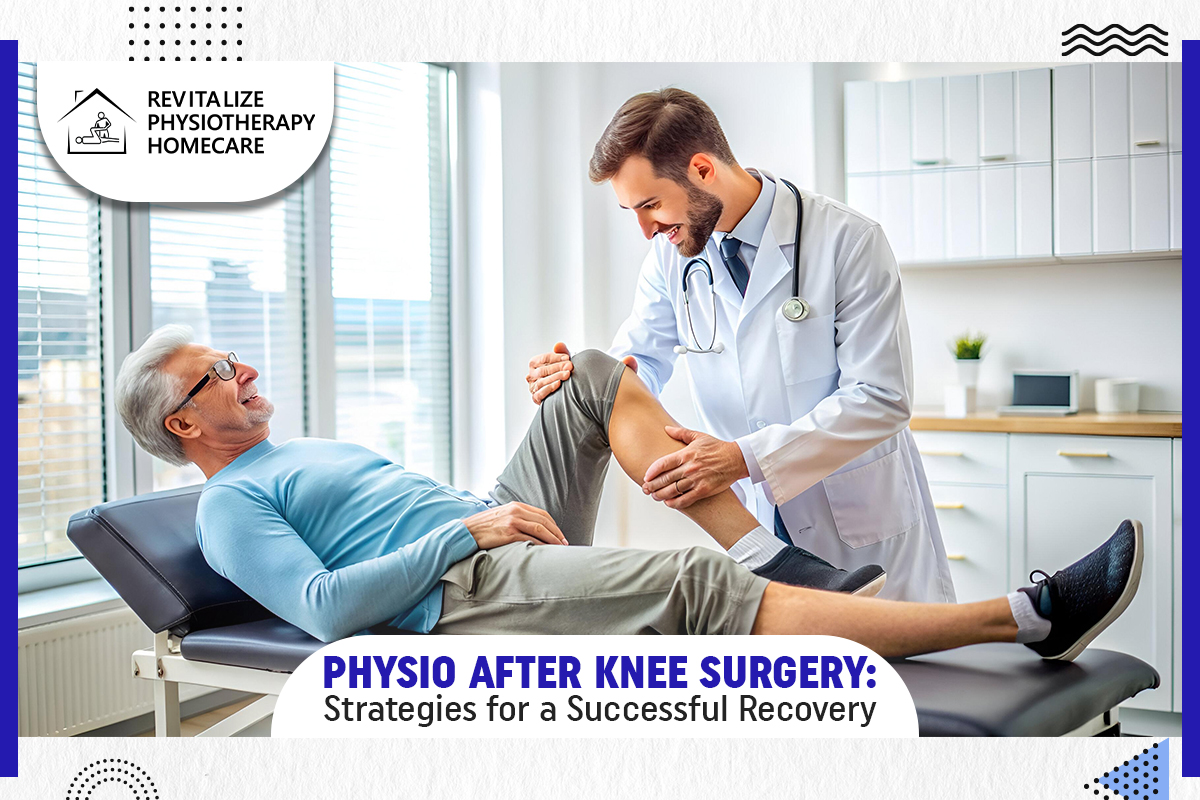Physio After Knee Surgery: Strategies for a Successful Recovery
Knee surgery can be a daunting experience, but with the right approach, recovery can be smooth and successful. Physiotherapy plays a critical role in this process, helping patients regain strength, mobility, and confidence in their movement. This guide will outline effective strategies for post-surgery physiotherapy, ensuring that your journey to recovery is as seamless as possible.
Understanding the Importance of Physiotherapy After Knee Surgery
Physiotherapy after knee surgery is essential for several reasons:
- Restores Mobility and Function: Surgery can leave your knee feeling stiff and weak. Physiotherapy helps restore mobility and function, allowing you to return to daily activities with greater ease.
- Reduces Pain and Swelling: Post-surgery, it's common to experience pain and swelling. Physiotherapy includes exercises and techniques that help reduce these symptoms, promoting faster healing.
- Prevents Complications: Without proper movement and exercises, you risk developing complications such as blood clots or scar tissue formation. Physiotherapy encourages safe movement, reducing these risks.
- Enhances Muscle Strength: The muscles around your knee may weaken after surgery. Physiotherapy strengthens these muscles, providing better support and stability to the knee joint.
Early-Stage Physiotherapy: Laying the Foundation
The early stages of recovery are crucial for setting the foundation for a successful rehabilitation process. Here's what you can expect:
- Initial Assessment: Your physiotherapist will begin with an initial assessment to understand your specific needs. This assessment helps in setting realistic goals and creating a personalized recovery plan.
- Pain Management: Managing pain is a top priority in the early stages. Your physiotherapist may use techniques such as ice therapy, gentle massage, and prescribed exercises to alleviate pain and reduce swelling.
- Gentle Movement: Initially, you’ll start with gentle exercises that promote blood flow and prevent stiffness. These exercises may include ankle pumps, leg lifts, and gentle knee bends. The focus here is on maintaining some level of movement without straining the knee.
- Range of Motion Exercises: Gradually, your physiotherapist will introduce exercises that improve your knee's range of motion. This is crucial to prevent stiffness and to ensure that your knee can bend and straighten fully as you heal.
Mid-Stage Physiotherapy: Building Strength and Stability
As your recovery progresses, the focus of physiotherapy shifts towards strengthening the muscles around your knee and improving stability. What normally occurs at this point is as follows:
- Strengthening Exercises: You’ll begin exercises that target the quadriceps, hamstrings, and calf muscles. These muscles support your knee, and strengthening them helps in reducing the load on your knee joint. Common exercises include squats, leg presses, and step-ups.
- Balance and Coordination Training: Regaining balance and coordination is vital for preventing falls and ensuring that your knee functions properly during everyday activities. Your physiotherapist may introduce balance exercises such as standing on one leg or using a balance board.
- Stretching: To improve flexibility and prevent stiffness, stretching exercises are essential. Your physiotherapist will guide you through stretches that target the muscles around your knee, helping to maintain a full range of motion.
- Functional Training: As your strength improves, your physiotherapist will introduce exercises that mimic everyday activities, such as walking, climbing stairs, and sitting down or standing up from a chair. This functional training is key to ensuring that you can return to your daily routine with confidence.
Advanced Physiotherapy: Returning to Normal Activities
In the advanced stages of recovery, physiotherapy focuses on preparing you to return to your normal activities, whether it’s daily chores, work, or sports. Here’s what this stage involves:
- High-Intensity Strengthening: At this point, you’ll engage in more intense strengthening exercises. These might include resistance training, heavier weights, and more challenging movements. The goal is to build up your muscle strength and endurance to pre-surgery levels or better.
- Advanced Balance and Proprioception: Your physiotherapist will continue to work on your balance and proprioception (awareness of your body’s position in space). Exercises like lateral movements, single-leg squats, and agility drills help ensure that your knee can handle dynamic and unpredictable movements.
- Sport-Specific Training: If you’re an athlete or involved in sports, your physiotherapist will design sport-specific exercises that help you regain the skills and strength needed for your sport. This could include jumping, sprinting, or quick directional changes.
- Gradual Return to Activity: Your return to normal activities will be gradual. Your physiotherapist will monitor your progress and adjust your exercises as needed, ensuring that you don’t overdo it and risk injury. The aim is to build your confidence and ensure that your knee can handle the demands of your daily life.
Tips for a Successful Recovery
- Follow Your Physiotherapist’s Advice: Your physiotherapist’s guidance is crucial for a successful recovery. Stick to the prescribed exercises and attend all your physiotherapy sessions.
- Stay Consistent: Consistency is key in physiotherapy. Even on days when you feel tired or unmotivated, it’s important to keep up with your exercises to ensure steady progress.
- Pay Attention to Your Body: Paying attention to your body is just as essential as pushing yourself. If you experience pain or discomfort during an exercise, stop and consult your physiotherapist.
- Maintain a Positive Attitude: Recovery can be a slow and sometimes frustrating process. Maintaining a positive attitude and celebrating small milestones can help keep you motivated.
- Stay Active: Even after you’ve completed your physiotherapy program, staying active is important. Regular exercise helps maintain the strength and flexibility you’ve gained, reducing the risk of future injuries.
Conclusion
Physio After Knee Surgery is a critical component of a successful recovery. While recovery takes time, with the right physiotherapy plan and support, you'll be back on your feet in no time. By following a structured and personalized physiotherapy plan, you can regain your strength, mobility, and confidence, allowing you to return to your normal activities with ease. Remember, recovery is a journey that takes time, but with dedication and the right support, you’ll be back on your feet in no time.
If you're preparing for or recovering from knee surgery, consult a physiotherapist to personalize your rehabilitation. At Revitalize Physiotherapy and Homecare, we create personalized treatment plans to meet your unique needs, ensuring a smooth recovery journey. Contact us at 905-452-0222 or email revitalize@physiocare.com to get started on your path to better health and mobility.




